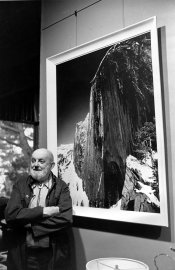Let say my personal point of view about that.
Ansel Adams recived visualization "divine illumination"

)) while shooting the "Monolith, The Face of Half Dome, Yosemite Valley, California". He was using a pretty bad lens, an Adon glass...
View attachment 242889
ZS core is the visualization technique, a high dynamic range scene does not fit in the dynamic range of paper, so you end placing "standard" 11 zones (0 to 10) totalling 11 stops dynamic range in a paper medium that sports 6.5 stops, so certain zones are compressed to allow the mids to have a natural gradation. This is common sense...
With the spot meter you know what scene zones will be compressen in the paper, Z-I, and Z-II are in the toe, Z-VII and Z-IX are in the shoulder, so they are compressed.
By adjusting exposure and development, and by taking advantage of film toe/shoulder we have the print as we visualized it. Of course we may make additional burn/dodge.
But several things changed since then:
> now we have some linear films that won't do the compressions in the capture, we have to do it in the printing.
> today we use Variable Contrast papers, so we may burn different areas in the print with a contrast filter, so we may adjust contrast locally !
Anyway ZS is core knowledge, we may use the specific recipe or not, but the important ZS thing is that paper has not the same Dynamic Range than the scene, so we have to visualize our print and then do what necessary to compress or to expand certain scene zones to allow shadows+mids+highlights fit in the paper range.
Optic Printing may start before shutter release.





 Isn't it the same ?
Isn't it the same ?
